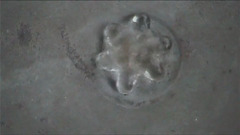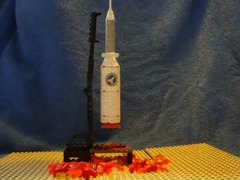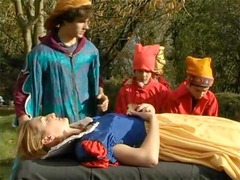Other Sorts of Film
SciCast films don’t have to be based around demonstrations, and many aren’t. Here are some alternatives, and examples.
Experiments
 Genuine investigative experiments can make excellent filming subjects, but if you don’t know where your film is going it’s hard to tell a coherent story. Our advice is to stick with demonstrations for your first few films. An outstanding example of this sort of film is The Leidenfrost Effect. Keep watching right to the end!
Genuine investigative experiments can make excellent filming subjects, but if you don’t know where your film is going it’s hard to tell a coherent story. Our advice is to stick with demonstrations for your first few films. An outstanding example of this sort of film is The Leidenfrost Effect. Keep watching right to the end!
Explanations & Explorations
When you’ve no props to point your camera at… well, that’s when you really earn your keep as a film-maker. We’ve had a few good examples, including Sonoluminescence, which is astonishingly watchable. Also take a look at The Last Straw, which elegantly mixes demonstration, explanation and drama, and The Doppler Effect, which is plain awesome.
Animation
Animated films can be time-consuming to make, but can also have tremendous impact. You have lots of control over exactly what happens, and it’s easy to re-record dialogue until you get it just right. We’ve quite a few animated films already on SciCast: see Mitosis and Grow Your Own Body Parts, for example, or Flu Animation for a hybrid of animated and live-action filming.
2010’s overall Best Film award-winner, Gravity, Mass and Weight was also an animation. Specifically, a stop-motion animation. This technique is most easily done with a camera linked to your computer, and dedicated software. You can make a stop-motion film in iMovie or Windows Live Movie Maker, but we’re big fans of iStopMotion for Macs. It makes the whole process considerably simpler.
For Windows, try iKitMovie or AnimatorHD — there’s a free version of the latter which might do the trick for you.
Time-lapse films are made by taking a picture every few minutes or hours, then gluing the results together. There are plenty of experiments that take hours or days to play out, and we’d love to see some examples of time lapse on SciCast. Stop-motion animation software tends to handle time lapse too. Alternatively, look around on eBay and see if you can find a time-lapse controller for your stills camera. Most video editing software can glue together a bunch of pictures fresh from the camera, as long as they’re numbered in sequence. Do some tests before you spend days on your film, though!
Powerpoint
The start of truly dreadful presentations is, all too often, Powerpoint. However, it can be used to produce rather neat animation sequences. Heartbeat is a charming example: very simple, but quite effective.
Drama
Lots of SciCast films include elements of drama, but we don’t often have dramas as such. They’re a lot of work, and squeezing them into 2½ minutes is a challenge. However, take a look at Whose Twin? for a cracking example.



